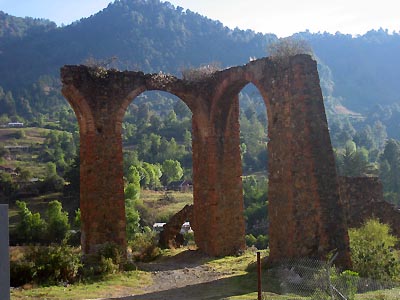In late February, we returned to see the
monarch butterfly overwintering site when Philip, Hanna, and Molly came
to visit. It was a warm clear day - perfect for the butterlies to
be moving around. When we saw them in November, it was cold and
cloudy and they were all clustered tightly to fir branches. This
trip was totally different. The place was ALIVE with butterflies:
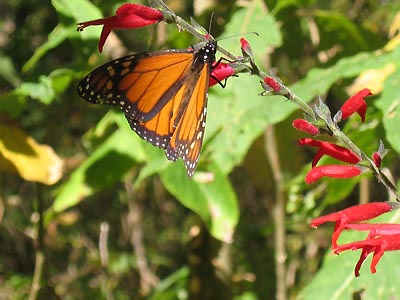

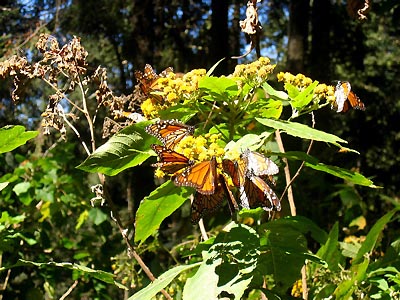

They were feeding on a number of flowering plants, getting the sugars (from nectar) and fats (from pollen) they'll need for the migration to the southern US. We saw a number of mated pairs and more will mate as the temperatures rise. The males die and the females start flying north in late March. Although the females will have mated by the time they migrate, fertilization of eggs doesn't occur until they make it to suitable sites for egg-laying (fields in the south where milkweeds grow). Larvae from those eggs will eat milkweed leaves (making them and the adults they will mature into poisonous); the adults thus formed will fly north and lay eggs on milkweed plants. The adults that hatch from these eggs will fly north for one more generation (if they hatch early enough in the summer) or head south to Mexico to overwinter. If you don't have any milkweeds on your property or in your neighborhood, plant some! Females will not lay their eggs anywhere else and the larvae will feed on nothing else!


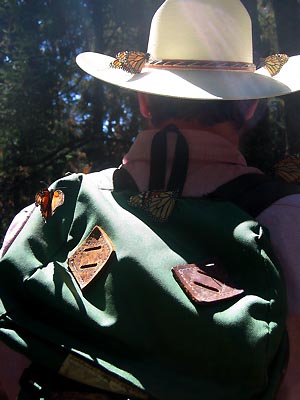
the flock of tourists
walking to see the butterflies
Butterflies
would land on you if you were in their flightpath


Molly, Margaret and Sarah
Helen,
Don, Margaret and Sarah
We could HEAR them fly when they occurred in dense patches!
We could HEAR them fly when they occurred in dense patches!


There were lots of dead butterflies in the trail and in the woods just off the trail. Many of these were males, who had mated already (hopefully!).
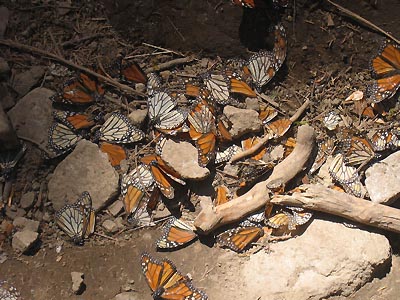
It was still cool enough that butterflies were in clusters on the branches, but as the sun hit the trees, the sky would alight with orange wings. It was beautiful to see so many butterflies in one location.
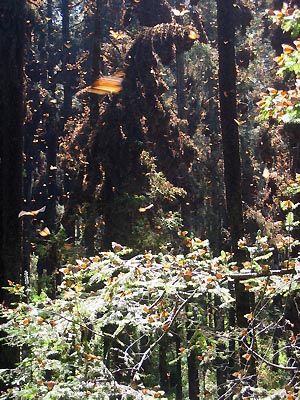


The trail leading into the forest was lined with stalls selling nick-nacks, anything with butterflies on them, and delicious blue corn tortillas. This community (El Rosario) makes money only during tourist season; in April the butterflies will be gone and many of these people travel to bigger towns to make money until the next migration of butterflies arrives. The movement of these invertebrates drives the economy of this region and also drives the movements of the people living here.
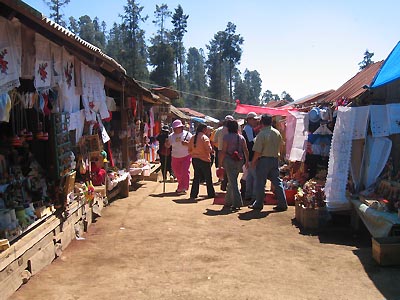
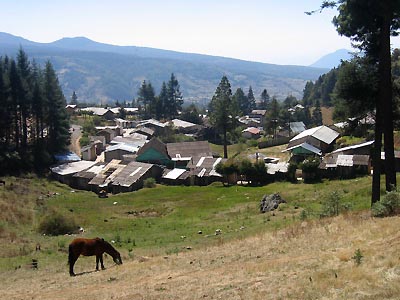
The town of Angangueo is the starting point for many people coming to see the butterflies. There is a large painted mural in town depicting the monarchs - it is clear that these insects are very important to the people of this area.
And here is the church in Angangueo, lovely against the blue sky.
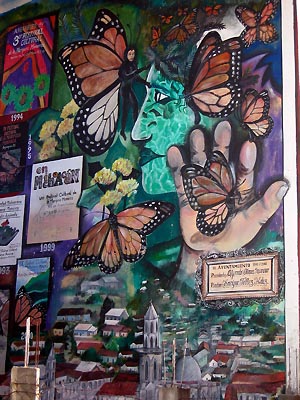
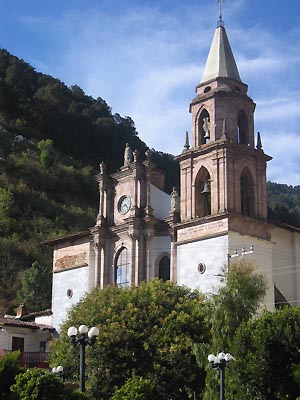
These arches are part of an old aqueduct on the edge of a current gas station - you just can't get away from history here!
